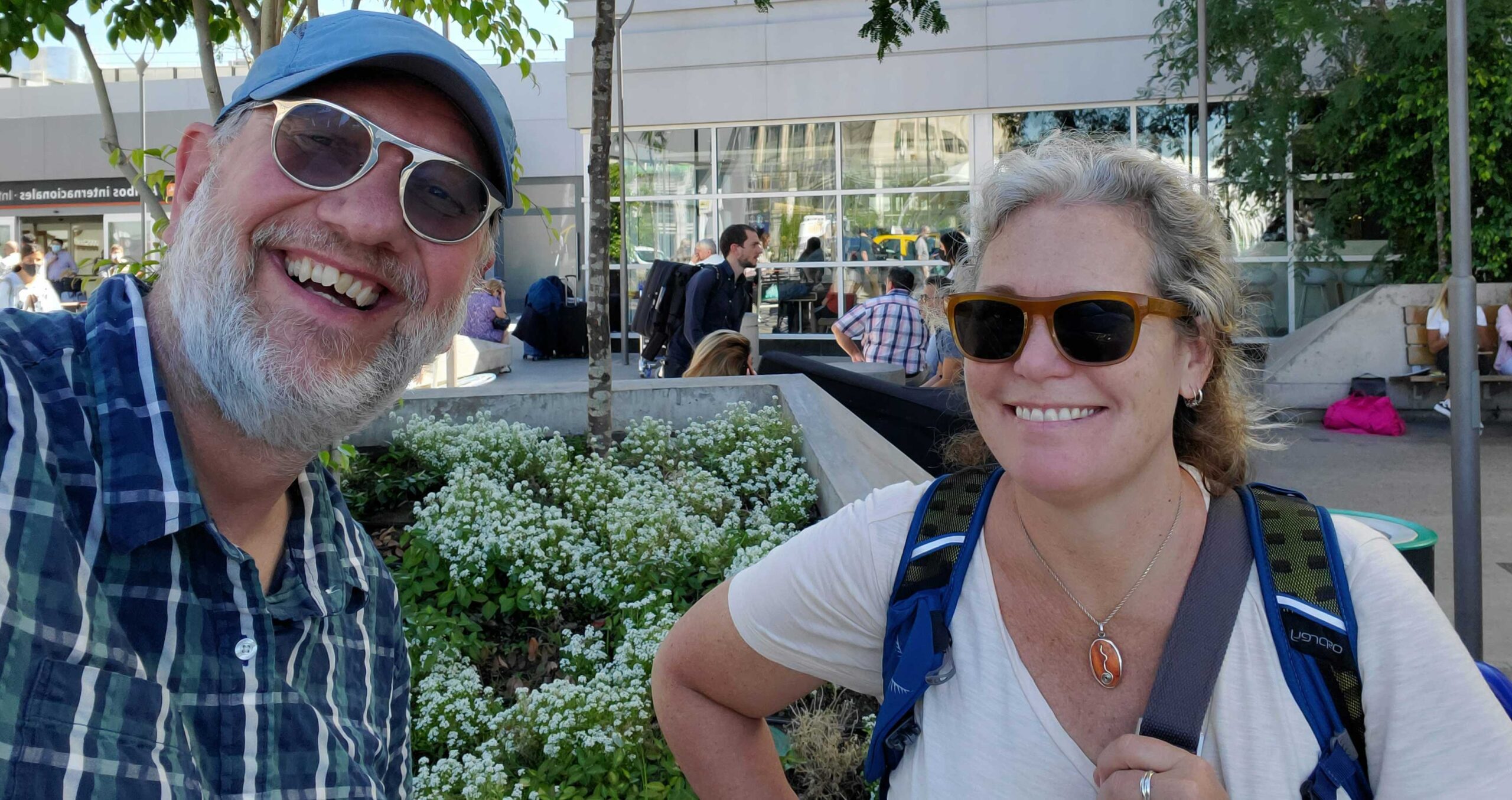So, we’re in our room at Don Tomas in San Pedro de Atacama not sleeping for one reason or another (happens when you change beds often) after a long day on the Moon, and we see lights pulling into the driveway outside our window at 4:30 am. We assumed it was an airport shuttle for some poor soul who had an early flight that day. Hours later at breakfast, we just happened to ask the staff and learned the early risers were actually on a tour! If you want to see the sunrise over the geysers at El Tatio, you have to get up early.
The debate began. Did we really want to watch the sun rise over the geysers? One might wonder why it was a big deal. El Tatio is one of the most popular sites in the area due to the huge number of thermal vents and the multi-color patterns left behind by the minerals in the water. To steal directly from Wikipedia once again,
El Tatio is a geothermal field with many geysers located in the Andes Mountains of northern Chile at 4,320 metres (14,170 ft) above mean sea level. It is the third-largest geyser field in the world and the largest in the Southern Hemisphere.
https://en.wikipedia.org/wiki/El_Tatio
Okay, so largest in the Southern Hemisphere. Would our experience really be diminished by going at a reasonable hour and avoiding all the tour buses? The geysers aren’t on a schedule and don’t bubble more or higher before the sun comes up. It is all about the lighting effects off the steam in the photographs. Were we really debating the best time to watch steam? Unfortunately, our guidebook also confirmed that the best time to experience the geysers and get the full effect of the steam across the landscape is an hour before sunrise.
When you get advice about when to go from multiple sources, it is hard to ignore. We forced ourselves out of bed to join the early-morning crowds at the geysers. One might ask how early is too early to go look at boiling water? How about before the flamingos are awake? We came across this flamboyance of sleepy flamingos during the drive as the sun was threatening to come over the mountains before we reached the geysers.

We weren’t sure we were going to beat the sunrise. This first photo captures our arrival just as the sun was rising above the hills. The effect of all the steaming vents reflecting the early-morning sunlight is quite impressive and rewarded our efforts to get out of bed and make the drive.
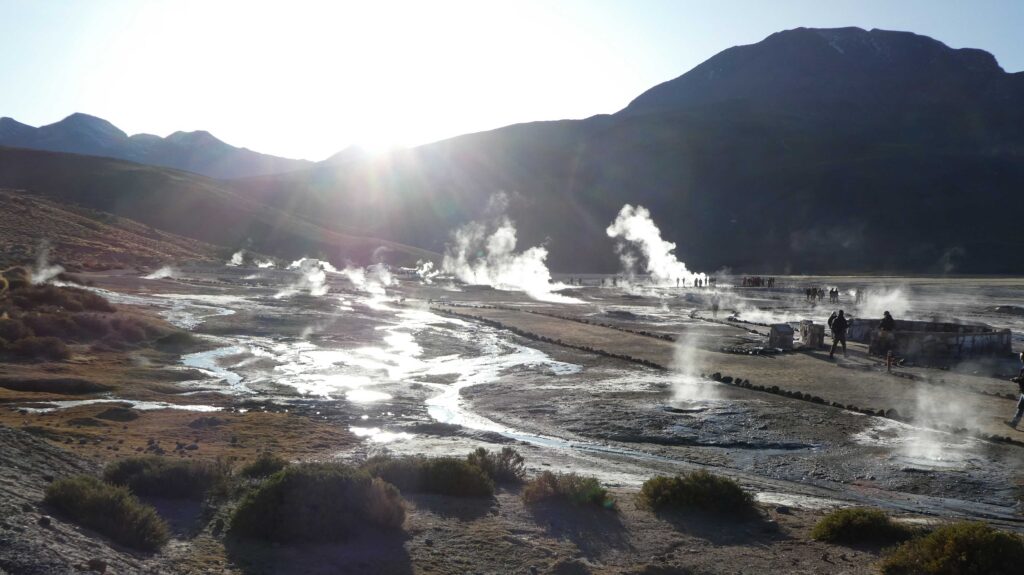
The Geysers
Anyone visiting El Tatio expecting to see regular jets of steam and water cascading into the sky will be disappointed. This isn’t an Old Faithful type of experience. The steam is mostly created from bubbling pools of water coming through vents. Some did have cycles of low to high that we tried to capture on video. Results were mainly videos of bubbling water overlaid with the sound of the wind in the camera’s microphone. Well, here’s one anyway so you get the idea.
There were many geysers and bubblers throughout the field. Some of the most interesting ones were vents that had built their own mineral cones. These weren’t mere holes in the ground, but geysers who had built their own stage over the years.

Some left behind impressive bulbous and colorful rock formations. Even though this vent has slowed to a trickle, it has built a long-term presence in the geyser field.
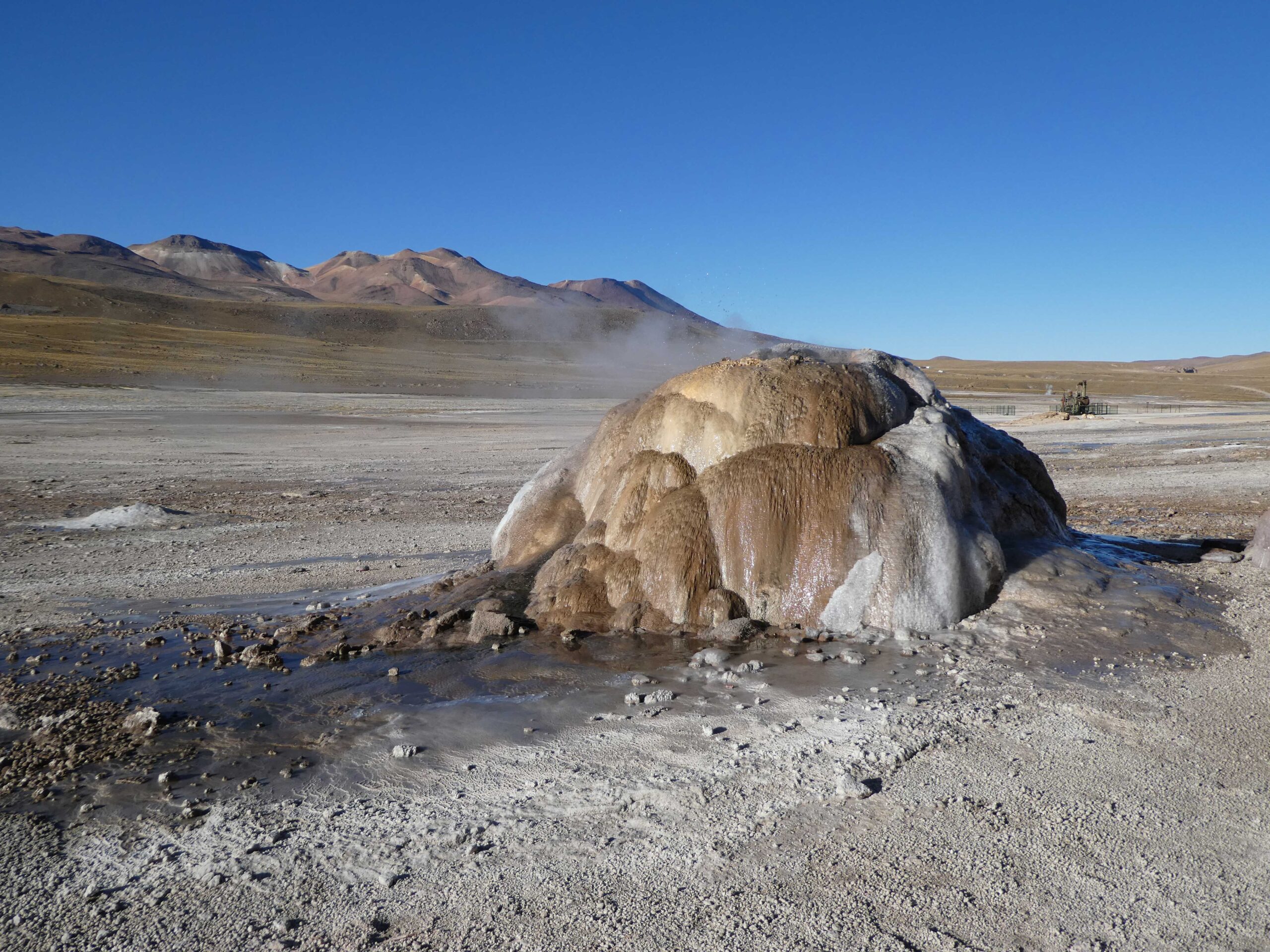
Here’s another example of a once very active thermal vent that built mineral mounds on the surface.
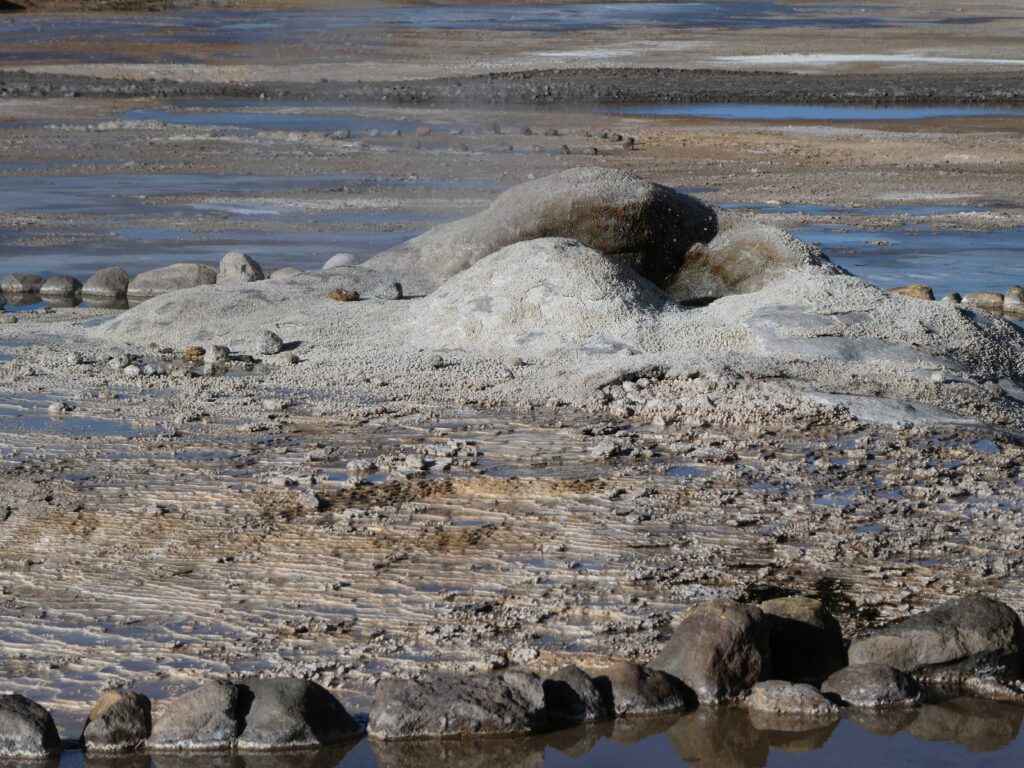
The colors are vibrant in the early morning light. The waters are multi-colored, and the deposits they leave behind reflect the yellow, red, green, and orange colors visible in the streams and pools.


The mineral build-up also resulted in some really interesting textures. Here’s one area that resembled tiny mushrooms.

Here’s cracked desert veiny pattern that covered one of the thermal fields.
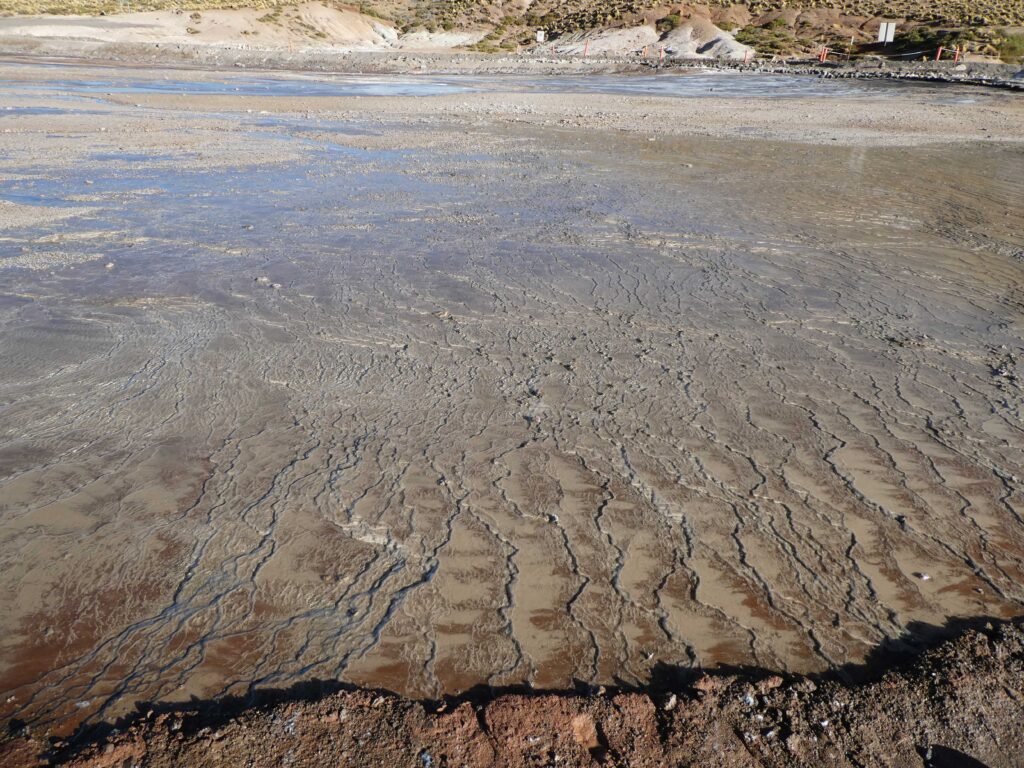
Before COVID restrictions changed the nature of visits to the park, visitors could plan to spend the day soaking in the mineral pool. While it is unfortunate that pool and changing rooms are no longer in use and suffering decay, the colors left behind on the walls of the disused pool seem as vibrant as the pool must have been full of bathers.
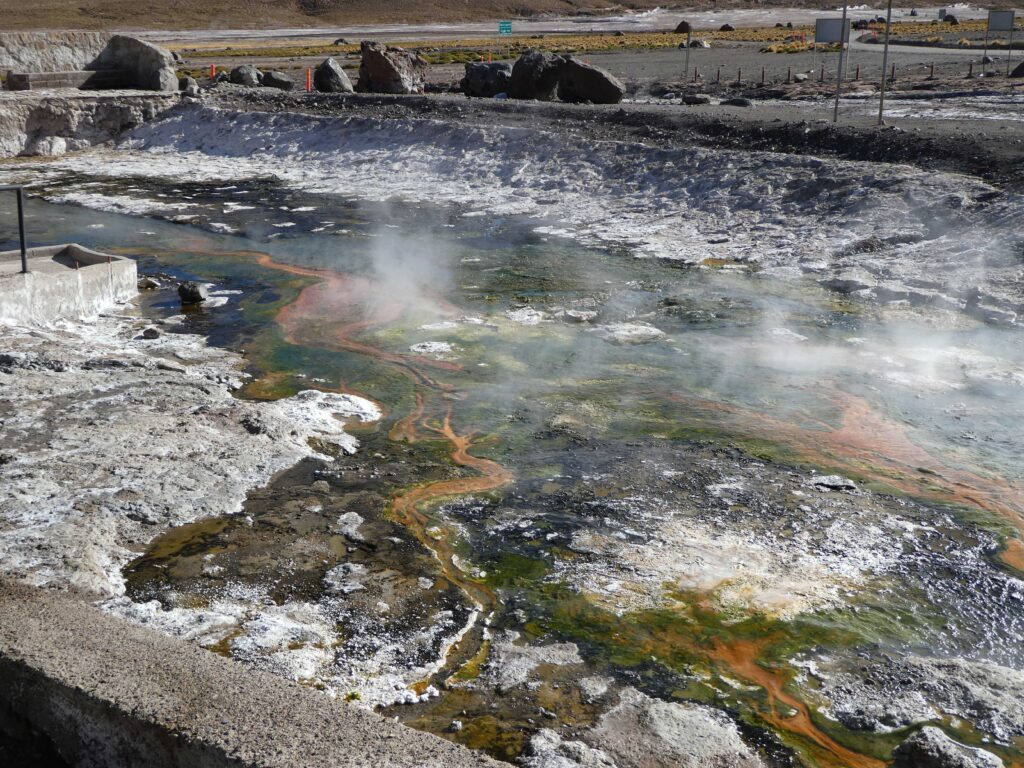
To wrap up the visit to El Tatio, we’ll share a couple more photos of the geysers. You’ll hopefully notice that there aren’t many tourists in the photos. That’s from patience and because we did arrive just as the sun was rising. By the time we were out enjoying the pools and geysers, most of the tour busses had already loaded and left. Timing was good, and we got to linger at and enjoy most of sights in the park.



The Drive Home
One of the highlights of the trip and one of the benefits of an early departure was the drive home. It was still mid-morning, and we encountered quite a few animals going about their daily business. We revisited the flamboyance of flamingos and found them much more active, well sort of.
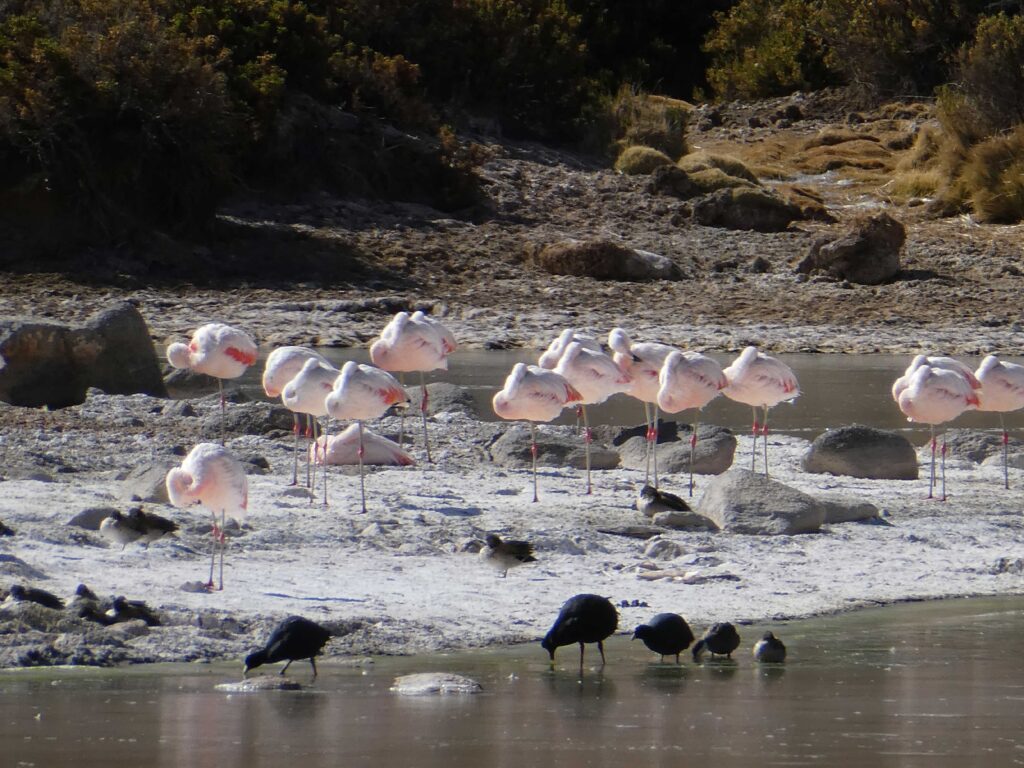
There were also a few vicuña grazing by the waterside.

It really was a great opportunity to see wildlife in the high-mountain desert. We also ran across some not-so-wild life as well. Three donkeys came so close to the car, we were sure one of them would stick his head in the window. This is from about a foot away. We left the mirror in the photo to give an idea of how close they actually were. Unfortunately, we didn’t bring our bag of donkey chow on the drive.

Wildlife wasn’t the only highlight. We did see some amazing landscapes on the drive. One particularly unique feature we stopped and gawked at for a while was a river of pampas grass flowing down a drainage on the side of the road. There was a parking lot, and the sight seemed to be a hiking stop on some of the El Tatio tour packages. It really was a unique and dramatic sight along the drive. Here’s a close-up that hopefully helps capture the dramatic flowing effect and dancing reflected light. Motion in the still.
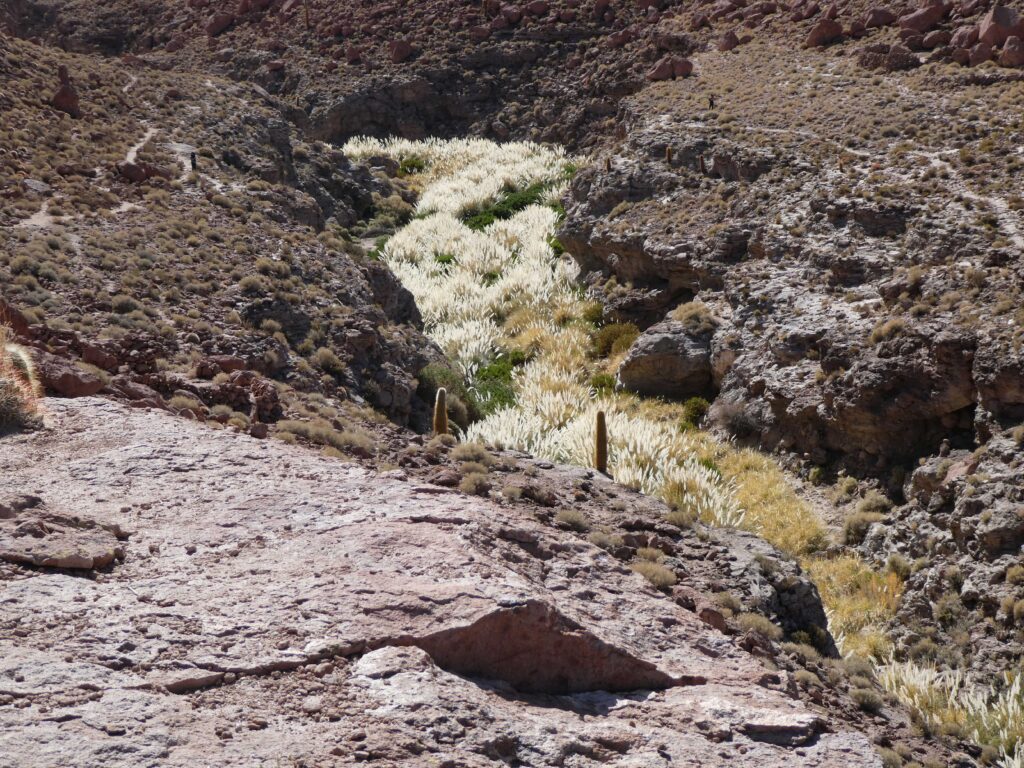
We enjoyed our time in the Atacama desert in northern Chile. For all the challenges Chile posed during our visit, it was worth it all to experience the unique landscapes we explored. The Atacama is a good jumping off point to venture into Bolivia. Many of the tour operators offered multi-day packages across the border. Problem was there were too many offers and no way to choose one over the other. That and the fact that we were just getting worn down. Four solid months of travel, countless hotel rooms, beds, pillows, and all those flights were starting to wear on us. As it was getting colder and moving into winter in the Southern Hemisphere, we decided it was time to move north and warm up. We left Chile for Costa Rica ultimately happy that we endured the challenges and grateful we got to experience the Chilean landscapes, culture, food, and warm hospitality. On to the beach!
